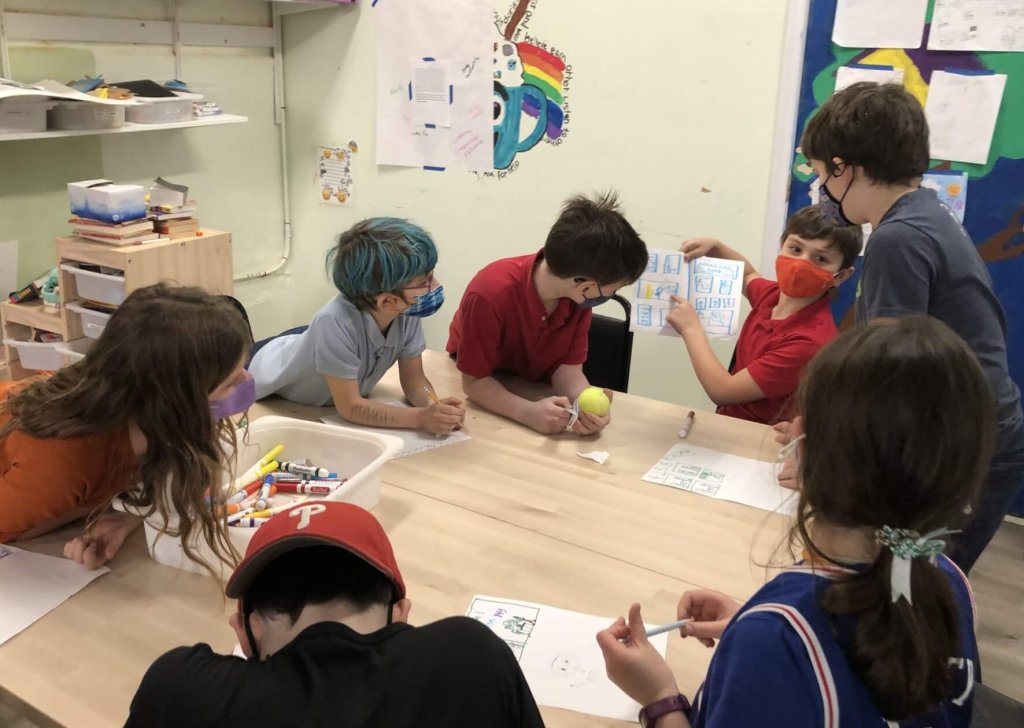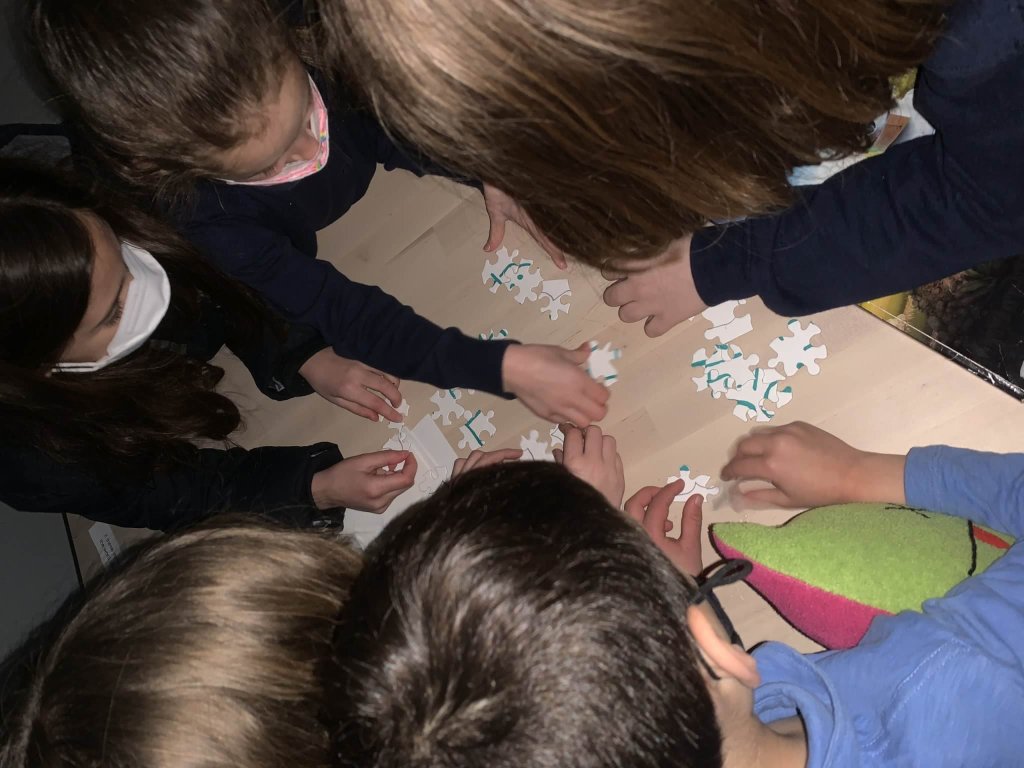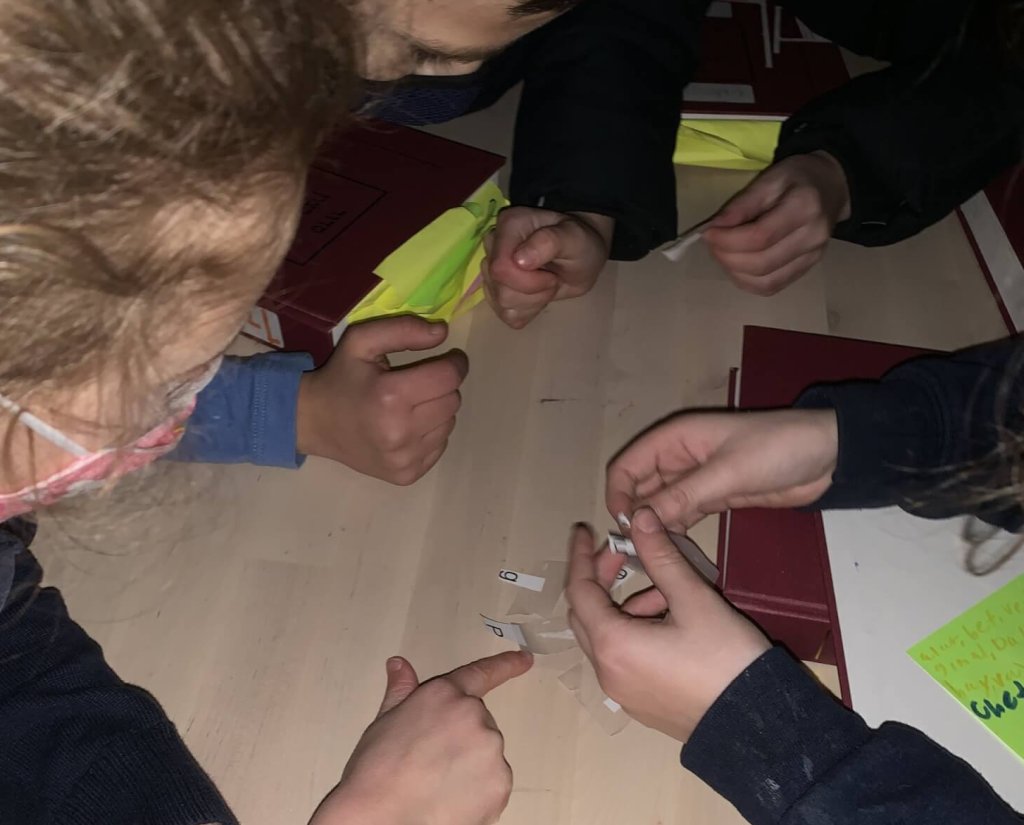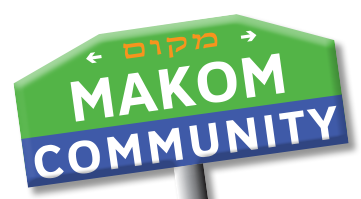
It is no secret that at Makom Community, we like to do things big, loudly, and with a lot of excitement. One cause for such fanfare? The starting of a new unit- a theme that we will spend the next several weeks exploring through the texts we study and, for Nitzanim (2nd-4th graders), our project-based-learning (PBL) projects.
Nitzanim at both of our lab schools had been asking what the upcoming unit and its culminating project would be since before Purim, so we were excited to get started. But, in true Makom Community fashion, we don’t just tell our learners what the new unit will be. Instead, we planned an “Entry Event” day which was composed of activities designed to let our learners dip their toes into the theme and get excited before we begin to introduce any text.

The first activity for the students in South Philly was a scavenger hunt, where learners entered a dark room and were instructed to hunt for clues which would eventually lead to the reveal of our Unit 3 Big Idea: Building Kehillah (community). Our learners rushed from clue to clue, finally reaching a bag of puzzle pieces which they worked together to solve revealing the word in Hebrew. One learner who had initially been reluctant to take on much Hebrew work volunteered to be the one to sound out the word, while another learner delivered the correctly read word to an educator who then revealed the translation. The Nitzanim in Center City did a similar activity and even managed to grapple with a Hebrew-English dictionary to find the translation themselves. Seeing our learners eagerly work together due to the excitement of studying gives us, as educators, one more reason to be grateful for the kehillah we are building here at Makom Community.

Following the Big Idea reveal, the kiddos immediately wanted to know what their PBL project would be and whether they could get started on it already. We love the enthusiasm but need to take projects like these one step at a time, starting with text. After bringing Bnei Yisrael (the Jewish people) out of slavery in Egypt, God says to Moshe, “Tell Bnei Yisrael to bring me trumah (contributions or donations); you shall accept trumah for me from every person whose heart volunteers” (Exodus 25:2). Before we even got into what the trumah can be or what it is for, we gleaned what we could about the process of building kehillah:
- Everyone can help – not just the most important or the strongest people.
- It’s best not to force people to contribute. That could lead to resentment.
- Having volunteer participation rather than compulsory participation allows for more enjoyment.
- Giving voluntarily or not might not affect the final product, but it does affect both the giver and the receiver in the process. Giving voluntarily allows you to feel more empowered. Knowing that you’re receiving from a voluntary giver would help the receiver avoid guilty about taking the donation.

God then lists a very specific and weird set of items that Bnei Yisrael can give as trumah. It included items like dolphin skin and goat’s hair [Exodus 25:3-7]. We imagined ourselves as members of Bnei Yisrael at this moment and considered whether we would want to contribute. “I would want to, to repay God for freeing us from slavery,” one kid suggested. “I would probably give some and keep some for myself because I’d want to participate in the trumah but not give everything up,” they clarified.
As we brought ideas from this text back to our new PBL projects, we considered the ways in which we each can contribute to Makom Community. What might we offer if we were to participate in rebuilding Makom from scratch? What are the communal gathering places at Makom, how do we use them, and what can we do to make them better? We’re so excited to keep exploring these questions and share our discoveries in our showcases at the end of May! Stay tuned…

